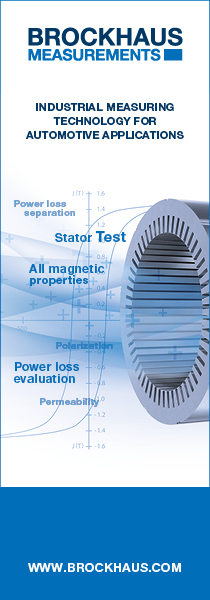Updated 12/02/19
This event will bring together industry with academia around developing MRI technologies.
The speakers and audience will be drawn from producers of standard MRI machines, small-scale novel and pre-clinical MRI developers/manufacturers, producers/distributors of magnetic micro- & nano- particles, and academics researching new alternative bio-compatible magnetic nano and micro particles for MRI-based diagnostics, or using MRI as a research tool. Talks and poster session targeted to non-specialist audiences to help stimulate discussion between industry and academia and facilitate the building of consortia. Representatives from the KTN will attend and speak about relevant I-UK (or other) funding opportunities for this area.
Poster submission: There will be interactive poster sessions and poster submissions are encouraged from any participants. Accepted student posters will gain free registration to the event. If you are interested to present a poster, please submit a short abstract (<300 words) plus the poster title, author/contributor names, affiliation addresses, and contact email address of the attendee/presenter. Please also indicate if you are a student (undergraduate/masters/PhD) if you wish to be considered for free registration. Please email the abstract in the form of a Word document to e.galanis@paragraf.com by 2pm on Friday 1st February 2019.
CHAIRS
- Dr Ellie Castle, Paragraf Ltd
- Mr Olivier Masseglia, Bartington Instruments
- Prof Sonia Contera, University of Oxford
- Ms Alba Piacenti, University of Oxford
VENUE
The venue is the Simpkins Lee Seminar Room on the ground floor of the Beecroft Building – the building in front of the Clarendon Laboratory on this map.
GETTING THERE
Car
There is no parking available near the venue. Oxford is notorious for its parking, and its parking enforcement. The best option is to use the Park and Ride; probably Pear Tree is the closest to the Clarendon.
Parking in Oxford
Many Oxford streets are closed to traffic and parking is severely limited. Visitors are encouraged to use the five Park and Ride bus services.
Please refer to Oxfordshire County Council’s up-to-date traffic information for details of all local road works and any disruptions likely to delay your journey.
Park and Ride
There are five Park and Ride sites which serve Oxford City Centre.
- Oxford Parkway (north, aka Water Eaton park & Ride)). For satnav use OX2 8HA. Take the 500 bus to and from the city centre.
- Pear Tree (north). For satnav use OX2 8JD. Take the 300 bus to and from the city centre.
- Redbridge (south). For satnav use OX1 4XG. Take the 300 bus to and from the city centre.
- Thornhill (east). For satnav use OX3 8DP. Take the 400 bus to and from the city centre.
- Seacourt (west). For satnav use OX2 0HP. Take the 400 bus to and from the city centre.
Please note that Thornhill and Seacourt are often full, particularly on University Open Days. We recommend that drivers coming from the east (including London), the south and the west use the Redbridge Park and Ride, while drivers arriving from the north can choose between Pear Tree and Oxford Parkway.
The Oxford Bus Company has detailed information on Park and Ride locations, timetables and fares.
Parking in Oxford city centre
Parking in Oxford city centre is limited and can be expensive. For information on car parks, on-street parking and costs of parking, see Oxfordshire County Council’s website.
For information on parking in Oxford for people with disabilities, please see Oxford City Council’s Blue Badge scheme.
Air – London airports
From London Heathrow and Gatwick airports, take The Airline coach service, which runs 24 hours a day. You can also get to Oxford by train from Heathrow via London, and from Gatwick via Reading.
From London Stansted airport, take the Stansted Express train service to Liverpool Street and then take the tube to either Paddington or Marylebone for direct trains to Oxford. Alternatively there is a National Express 757 coach service.
Trains
Oxford is a mainline railway station, although it is about 30 minutes walk to the Clarendon.
Direct services run from London Paddington (serving Oxford station) and London Marylebone (serving Oxford and Oxford Parkway stations). Other services operate from the north via Birmingham New Street; from the south via Reading; and from the west via Didcot or Reading.
For details and to plan your journey, see National Rail Enquiries.
Please use Google Maps or our interactive map to find your way from the station to the part of the University you are visiting.
Coaches
There are two frequent 24-hour direct services between Oxford and London, the X90 and the Oxford Tube.
For information on coaches from other major cities and airports, contact National Express.
The central coach station is at Gloucester Green in the city centre. Please use Google Maps or our interactive map to find your way from the station to the part of the University you are visiting.
Taxis
There are taxi ranks at Oxford Railway Station, Gloucester Green Coach Station and St Giles’ in the city centre.
A list of taxi companies can be found on Oxfordshire’s Visitor Information Centre website.
DRESS CODE
The dress code for the event is business attire / smart casual.
SPONSORS
Ferrite Level





